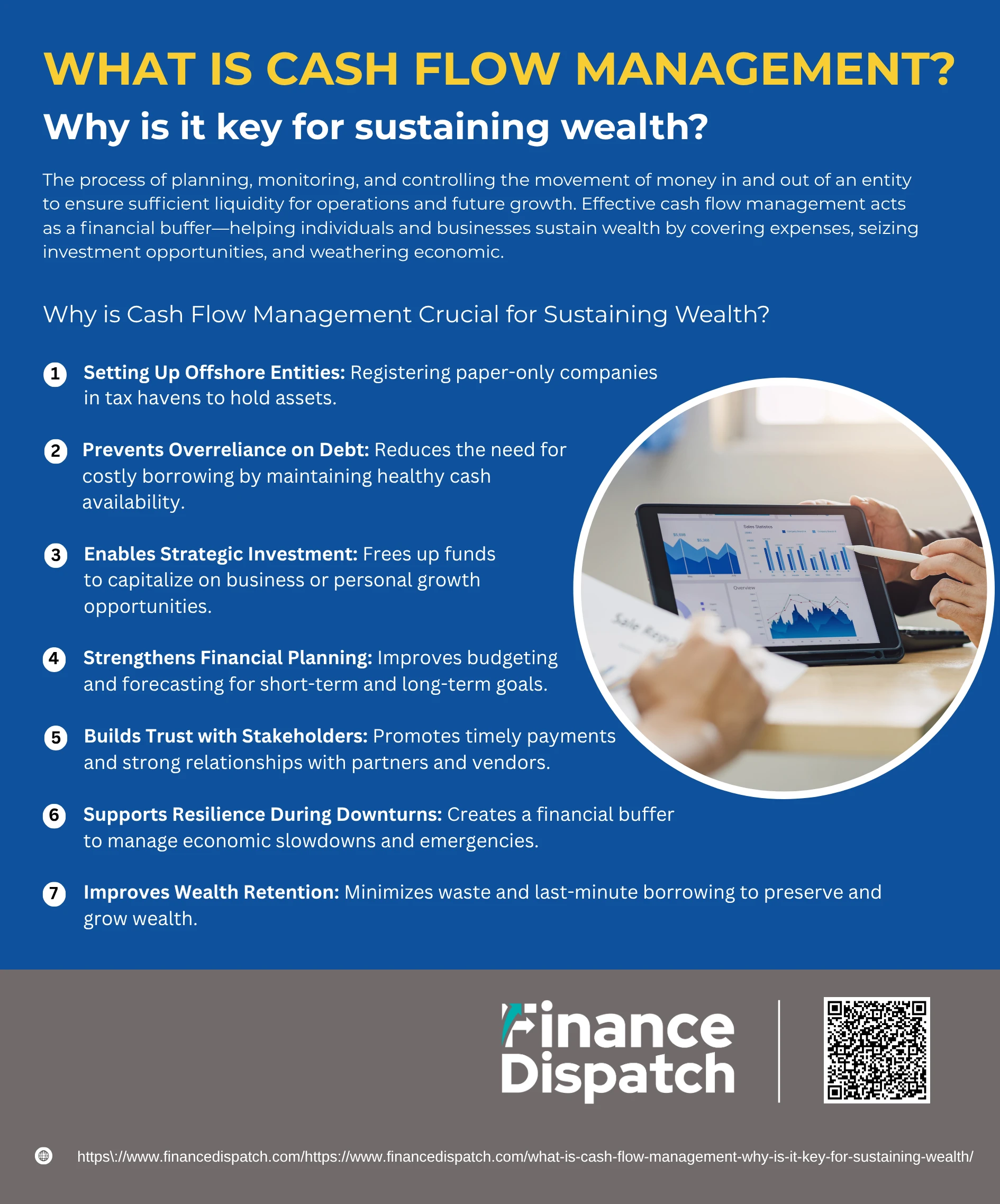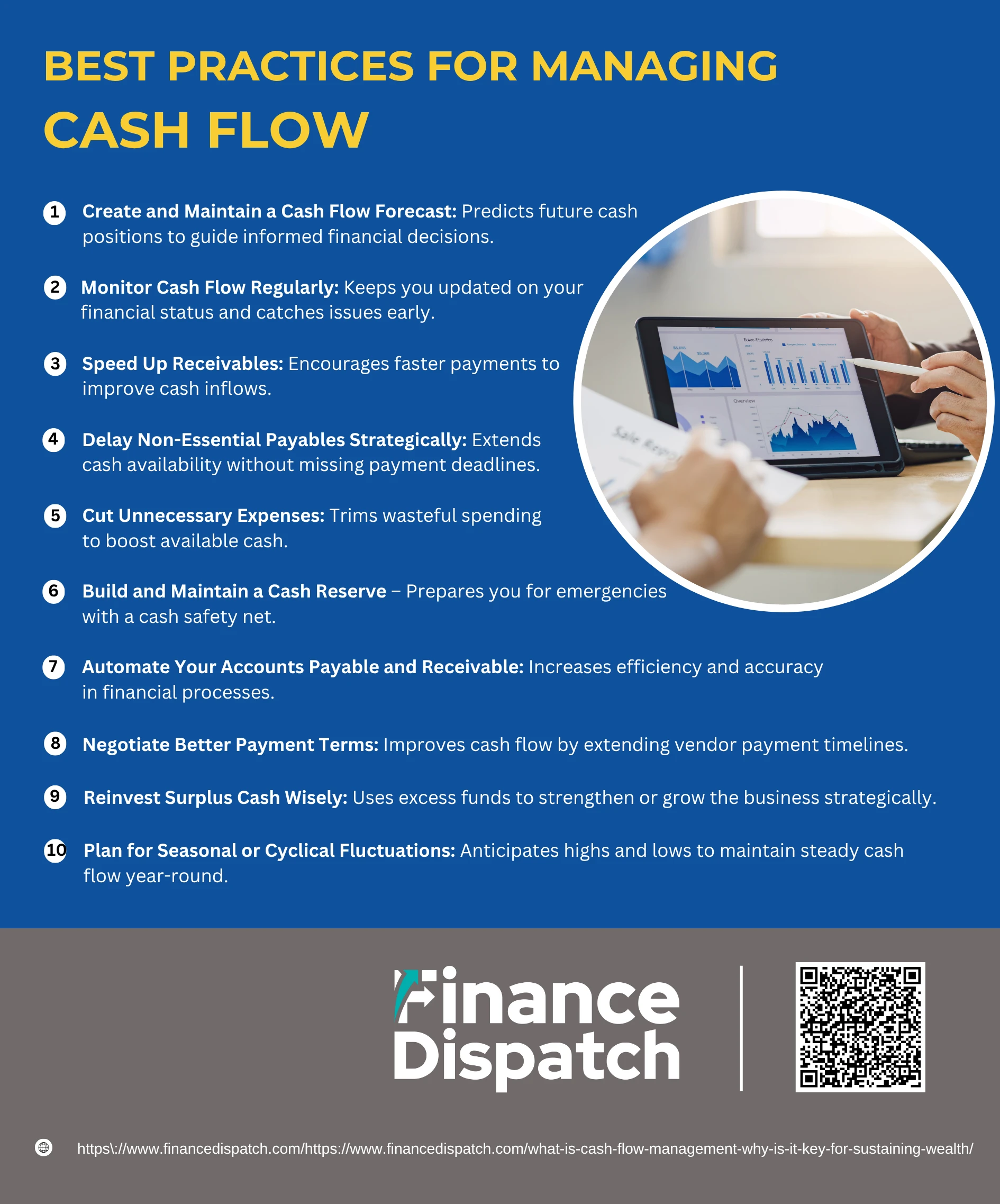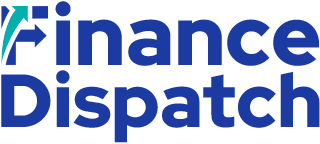In the world of business and personal finance, one principle remains constant: cash is king. But simply having money isn’t enough — knowing how to manage it effectively is what separates financial survival from long-term success. That’s where cash flow management comes in. At its core, cash flow management is the strategic process of monitoring, analyzing, and optimizing how money enters and leaves your accounts. Whether you’re running a company or managing your own finances, keeping a steady, healthy flow of cash is crucial for covering expenses, seizing opportunities, and building lasting wealth. Without it, even profitable businesses can struggle or fail. In this article, we’ll explore what cash flow management truly entails and why it’s a foundational skill for sustaining financial stability and long-term growth.
What is Cash Flow Management?
Cash flow management is the process of tracking, forecasting, and optimizing the movement of money into and out of a business or individual’s finances. It involves keeping a close eye on incoming cash—such as revenue from sales, investments, or loans—and outgoing expenses, like payroll, rent, inventory, and debt payments. The goal is to ensure there’s always enough cash available to meet financial obligations while also making the most of any surplus. Effective cash flow management helps prevent shortfalls, avoids the need for emergency borrowing, and creates the financial flexibility needed to grow sustainably. It’s not just about having money—it’s about knowing when it’s coming, where it’s going, and how to use it wisely.
 Why is Cash Flow Management Crucial for Sustaining Wealth?
Why is Cash Flow Management Crucial for Sustaining Wealth?
Cash flow management isn’t just a back-office financial task — it’s a vital practice that protects and sustains your wealth over time. Whether you’re running a business or managing personal finances, having control over when money comes in and how it goes out allows you to stay financially stable, make smarter decisions, and avoid costly pitfalls. Poor cash flow, even with strong profits or income on paper, can lead to missed opportunities, financial stress, or even insolvency. In contrast, consistently managing your cash flow allows you to build a cushion, fund future goals, and navigate unpredictable challenges with confidence.
Here are key reasons why cash flow management plays a critical role in sustaining long-term wealth:
1. Maintains Liquidity for Essential Payments
Cash flow management ensures you always have enough funds available to cover routine expenses such as rent, payroll, utilities, and loan payments. This prevents disruptions to your operations or lifestyle and helps avoid late fees or penalties.
2. Prevents Overreliance on Debt
Without proper cash flow, many turn to short-term loans or credit cards to stay afloat. Effective cash flow planning minimizes this dependency, protecting you from accumulating interest-heavy debt that can drain your wealth.
3. Enables Strategic Investment
When you manage your cash well, you free up resources to invest in new opportunities—whether it’s expanding a business, upgrading equipment, entering new markets, or growing your personal investment portfolio.
4. Strengthens Financial Planning
Tracking and forecasting your cash flow helps you plan accurately for both short-term needs and long-term goals. It gives you the clarity to budget wisely, allocate resources efficiently, and avoid financial surprises.
5. Builds Trust with Stakeholders
Reliable cash flow means timely payments to suppliers, lenders, employees, and partners. This consistency builds strong relationships, enhances your reputation, and may even unlock better terms or exclusive opportunities.
6. Supports Resilience During Downturns
Economic cycles, emergencies, or slow sales are inevitable. A solid cash flow strategy helps you maintain reserves to weather lean times without making drastic cuts or risking your assets.
7. Improves Wealth Retention
Even high earners or profitable businesses can lose money through poor cash flow habits. By avoiding waste, late fees, and last-minute borrowing, you preserve more of what you earn and strengthen your financial position over time.
Key Components of Cash Flow Management
Understanding and managing your cash flow requires more than just tracking money coming in and out — it involves examining every part of the financial cycle that affects liquidity. Cash flow management is most effective when broken down into its core components, each of which plays a vital role in maintaining financial stability and supporting future growth. By focusing on these areas, you can gain better visibility into your finances and make informed decisions that protect and build your wealth.
Here are the key components of cash flow management:
1. Cash Inflows
This includes all the money entering your business or personal accounts — such as sales revenue, investment returns, loan proceeds, or asset sales. Reliable and predictable inflows are critical to maintaining liquidity.
2. Cash Outflows
These are all the expenses and payments leaving your accounts, including operational costs, payroll, rent, loan repayments, and taxes. Managing outflows ensures you don’t overspend and can meet obligations on time.
3. Cash Flow Forecasting
The process of predicting future inflows and outflows to anticipate shortfalls or surpluses. Forecasting allows for proactive planning and helps avoid financial emergencies.
4. Timing of Cash Movements
When cash is received or paid can significantly impact your liquidity. Strategically timing payables and receivables helps balance your cash position and avoid unnecessary borrowing.
5. Accounts Receivable Management
Ensuring that customers or clients pay invoices on time. This improves your inflow predictability and reduces the risk of cash shortages.
6. Accounts Payable Management
Managing how and when you pay your vendors. Stretching payment terms (without hurting relationships) helps conserve cash without incurring penalties.
7. Cash Reserves
Having a buffer of readily accessible cash to cover unexpected expenses or seasonal slowdowns. This safety net prevents disruption in operations or personal finances.
8. Use of Surplus Cash
When inflows exceed outflows, it’s important to strategically use that extra cash — whether by reinvesting in growth, paying down debt, or saving for future goals.
 Best Practices for Managing Cash Flow
Best Practices for Managing Cash Flow
Managing cash flow is about maintaining financial control while making sure you have enough liquidity to meet obligations, invest wisely, and grow sustainably. It’s not just about reacting to shortfalls — it’s about proactively building a system that supports long-term financial strength. When you adopt the right strategies, you can avoid common pitfalls like delayed payments, overspending, or being unprepared for downturns. Below are ten key best practices that can help you maintain a healthy cash flow.
1. Create and Maintain a Cash Flow Forecast
A reliable forecast helps you predict how much cash you’ll have in the near future. By estimating your upcoming inflows (sales, receivables, loans) and outflows (expenses, taxes, payroll), you can plan accordingly. This allows you to avoid surprises, adjust spending, and prepare for large expenses or slow periods well in advance.
2. Monitor Cash Flow Regularly
Set a schedule to review your cash flow—weekly or even daily for tighter operations. This keeps you aware of your actual cash position and helps catch issues (like overdue invoices or rising expenses) before they become problems. Consistent monitoring gives you control, enabling timely decisions when adjustments are needed.
3. Speed Up Receivables
Getting paid faster is one of the simplest ways to improve cash flow. You can reduce payment terms (e.g., from 60 to 30 days), offer early payment incentives, or require deposits for large orders. The goal is to shrink the gap between completing a sale and actually receiving the cash.
4. Delay Non-Essential Payables Strategically
Paying bills right away might seem responsible, but it can drain your cash unnecessarily. Instead, pay closer to the due date—without being late. This keeps more money in your account longer, increasing flexibility while maintaining vendor trust.
5. Cut Unnecessary Expenses
Regularly audit your expenses to identify areas of waste or low return on investment. Cancel underused subscriptions, renegotiate vendor contracts, and look for opportunities to streamline operations. Even small reductions in recurring costs can significantly improve cash flow over time.
6. Build and Maintain a Cash Reserve
A reserve or “emergency fund” is your safety net. It allows you to cover unplanned expenses, survive revenue slowdowns, or seize unexpected opportunities without disrupting operations. Aim to set aside at least 2–3 months’ worth of operating expenses.
7. Automate Your Accounts Payable and Receivable
Automation tools help you streamline invoicing, approval processes, and payment schedules. They reduce manual errors, speed up collections, and improve transparency. Real-time dashboards can also help you track outstanding payments and upcoming bills in one place.
8. Negotiate Better Payment Terms
Talk to suppliers about extended payment deadlines or bulk discounts. Many vendors are open to flexible terms for trusted partners. Extending your Days Payable Outstanding (DPO) without damaging relationships helps conserve cash and smooth out flow inconsistencies.
9. Reinvest Surplus Cash Wisely
When you experience cash surpluses, don’t let that money sit idle. Use it to pay down high-interest debt, invest in high-ROI business areas (like marketing or technology), or save for future expansion. Strategic use of surplus cash increases returns and strengthens financial health.
10. Plan for Seasonal or Cyclical Fluctuations
Many businesses experience highs and lows throughout the year. Identify these patterns and plan in advance. For example, build cash reserves during peak seasons to support the slower months, or adjust staffing and inventory levels accordingly to maintain balance.
Essential Cash Flow Metrics and Formulas
To effectively manage cash flow, it’s important not only to track where money is going but also to measure and interpret it using the right metrics. These key formulas give you insights into how much cash you actually have, how efficiently you’re managing your payables, and how well you’re using surplus funds. Understanding these indicators helps you make informed decisions, reduce risk, and optimize your financial operations for growth and sustainability.
Below is a table outlining some of the most essential cash flow metrics and their formulas:
| Metric | Purpose | Formula |
| Free Cash Flow (FCF) | Measures how much cash is available after expenses for reinvestment or savings | FCF = Net Income + Depreciation/Amortization – Change in Working Capital – Capital Expenditures |
| Operating Cash Flow (OCF) | Assesses the cash generated by core business operations | OCF = Operating Income + Depreciation – Taxes + Change in Working Capital |
| Days Payable Outstanding (DPO) | Indicates how long a business takes to pay its suppliers | DPO = (Accounts Payable × Number of Days) ÷ Cost of Goods Sold (COGS) |
| Discounts Captured Rate | Shows how well a business takes advantage of early payment discounts | Discounts Captured Rate = Discounts Captured ÷ Discounts Offered |
| Net Cash Flow | Tracks total cash movement in and out over a period | Net Cash Flow = Total Cash Inflows – Total Cash Outflows |
| Cash Conversion Cycle (CCC) | Measures how quickly a business converts investments into cash flow | CCC = Days Inventory Outstanding + Days Sales Outstanding – Days Payable Outstanding |
Cash Flow Strategies for Long-Term Financial Success
Sustaining financial success isn’t just about earning more — it’s about managing what you already have with precision and foresight. Long-term stability requires smart strategies that keep your cash flow healthy through every phase of business growth or personal financial planning. By adopting proven cash flow strategies, you can ensure that your money continues working for you, even during economic uncertainty or seasonal fluctuations.
Here are some effective cash flow strategies for long-term financial success:
1. Implement Rolling Cash Flow Forecasts
Update your forecasts regularly (weekly or monthly) to anticipate changes and plan proactively for expenses, investments, or slow periods.
2. Build a Financial Buffer
Set aside surplus cash during profitable months to create a reserve that can be used during leaner times or for unexpected emergencies.
3. Diversify Revenue Streams
Reduce dependency on a single income source by exploring complementary products, services, or income-generating investments.
4. Negotiate Supplier and Customer Terms
Extend payment terms with vendors and encourage quicker payments from customers to improve cash inflow timing without straining relationships.
5. Automate Accounts Payable and Receivable
Use software to streamline invoicing and payment processing, ensuring accuracy, faster turnaround, and better financial visibility.
6. Lease Instead of Buy
Leasing equipment or property conserves cash and provides flexibility, especially for items that depreciate or require frequent upgrades.
7. Review and Reduce Fixed Costs
Regularly audit your operating expenses and cut non-essential services or renegotiate contracts to boost available cash.
8. Use Surplus Cash for Strategic Growth
Reinvest positive cash flow into areas with long-term return potential, such as marketing, technology, or product development.
9. Monitor Cash Flow Metrics Closely
Keep an eye on indicators like free cash flow, operating cash flow, and DPO to ensure financial decisions align with your cash position.
10. Secure Flexible Financing Options Early
Establish lines of credit or partnerships with lenders before you need them, giving you peace of mind and room to grow without disruption.
Real-World Application: Case Study
A strong example of effective cash flow management in action is seen in the transformation of House of Cheatham, one of the oldest health and beauty manufacturers in the U.S. The company initially operated with a reactive approach to accounts payable, paying invoices as soon as they were received, which strained their cash reserves and limited strategic flexibility. By implementing an AP automation solution, House of Cheatham gained greater visibility into their cash flow and began managing payments more strategically. This shift allowed them to optimize their payment schedule, extend Days Payable Outstanding (DPO), and prioritize payments to key vendors. As a result, they improved cash liquidity without jeopardizing important supplier relationships—ultimately enabling more efficient operations and positioning the business for long-term financial growth.
Common Pitfalls of Poor Cash Flow Management
Even profitable businesses and high-income individuals can face serious financial trouble if cash flow isn’t managed properly. Poor cash flow management often results from overlooked details, delayed reactions, or lack of planning — all of which can snowball into larger issues over time. These pitfalls can lead to late payments, missed opportunities, strained relationships, and even insolvency. Understanding the most common mistakes is the first step in avoiding them and creating a more resilient financial system.
Here are some of the most frequent pitfalls caused by poor cash flow management:
1. Confusing Profit with Cash Flow
A business may be profitable on paper but still run out of cash if inflows and outflows aren’t properly timed.
2. Overestimating Future Revenue
Relying too heavily on projected sales or expected payments can lead to overspending and underfunded operations.
3. Neglecting Cash Flow Forecasting
Without forecasting, businesses are often unprepared for seasonal fluctuations, large expenses, or delayed receivables.
4. Failing to Collect Receivables Promptly
Delayed invoicing or poor follow-up on overdue payments can choke cash inflows and create liquidity problems.
5. Paying Expenses Too Early
Paying vendors immediately rather than on the due date may seem responsible, but it reduces the cash available for other needs.
6. Holding Excess Inventory
Tying up cash in unsold inventory can lead to liquidity shortfalls, especially when those goods are slow-moving or obsolete.
7. Not Maintaining a Cash Reserve
Without a financial buffer, even minor disruptions or emergencies can lead to major financial stress.
8. Ignoring Accounts Payable Strategy
Paying all bills equally without prioritization can weaken cash flow and damage important supplier relationships.
9. Expanding Too Quickly Without Planning
Rapid growth often requires upfront investments; without proper cash flow support, it can create dangerous financial gaps.
10. Lack of Real-Time Financial Visibility
Relying solely on monthly statements instead of tracking daily or weekly cash flow can lead to late reactions and missed warning signs.
How to Build Financial Resilience through Cash Flow
Building financial resilience means preparing your business or personal finances to withstand uncertainty, adapt to change, and seize opportunities — and cash flow plays a central role in making that possible. By consistently managing cash inflows and outflows, maintaining accurate forecasts, and setting aside reserves, you create a financial cushion that allows you to navigate slow seasons, unexpected expenses, or market downturns without panic. Tools like AP automation, real-time tracking, and strategic payment scheduling help you stay agile and make smarter decisions under pressure. Ultimately, resilient cash flow management empowers you to move from reactive to proactive — ensuring not just survival during tough times, but long-term financial stability and growth.
Conclusion
Cash flow management is more than a financial habit — it’s a critical strategy for preserving stability, enabling growth, and sustaining wealth over time. Whether you’re a business owner or an individual seeking financial clarity, understanding how money moves through your accounts gives you the power to make informed decisions, avoid unnecessary risk, and build long-term resilience. By forecasting accurately, managing payables and receivables wisely, and maintaining a healthy cash buffer, you create a solid foundation for lasting success. In the end, managing cash flow effectively isn’t just about surviving — it’s about thriving with confidence, no matter what challenges lie ahead.



